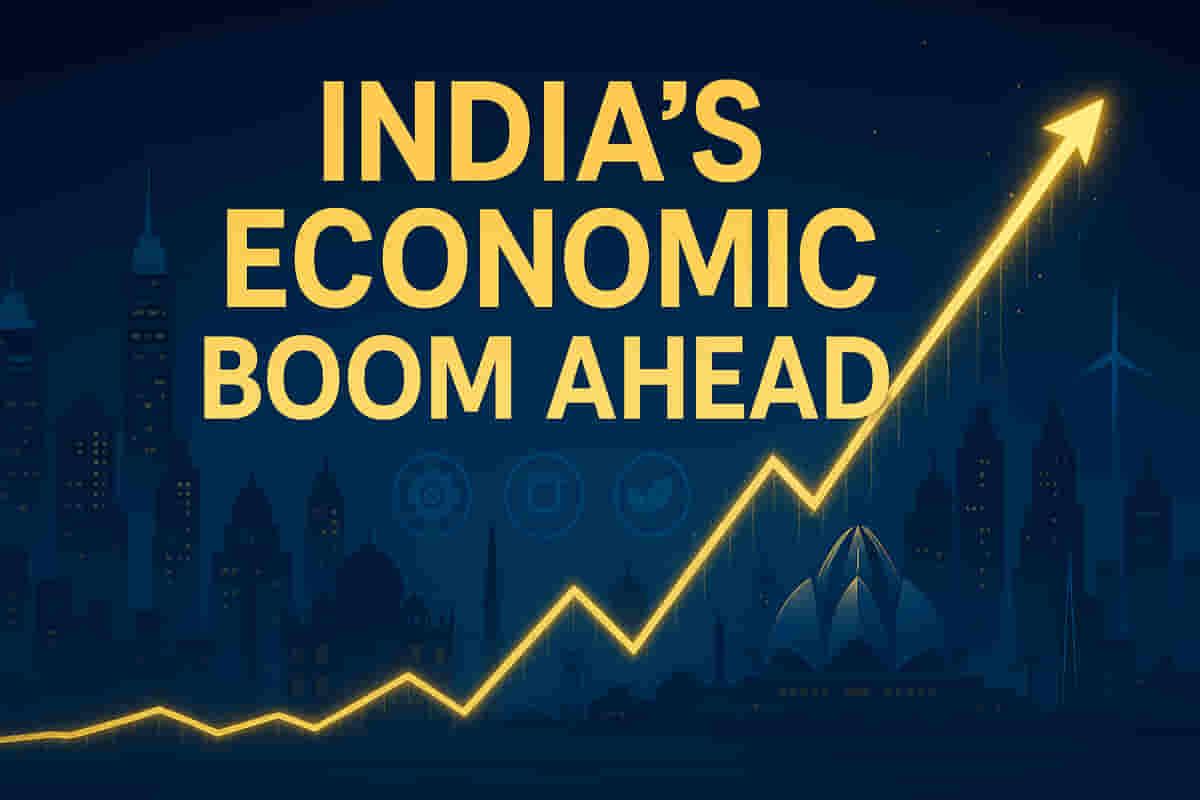India's Economy Projected to Grow 6.7% Annually Until 2040, Outpacing China, According to DBS Bank Report
Economy
|
30th October 2025, 2:02 PM

▶
Short Description :
Detailed Coverage :
A comprehensive report by DBS Bank projects India's economy to experience robust growth, with an average annual expansion rate of 6.7 percent between 2025 and 2040. This forecast significantly outpaces China's anticipated 3 percent average real GDP growth and the ASEAN-6 region during the same period.
The projections suggest India's nominal GDP (Gross Domestic Product in Indian Rupees) could average 9.7 percent growth annually, with a potential 'bull case' reaching 7.3-7.5 percent. India's economy, already recognized as the fourth largest globally at $4.13 trillion (as per IMF), is expected to surge towards $5.6 trillion by 2030 and nearly $11.5 trillion by 2040. Furthermore, per capita income is on track to exceed $3,700 within this decade and climb to $7,000 by 2040, a milestone indicating India's transition into an upper-middle-income country. These projections align with the government's 'Viksit Bharat' (developed India) objectives.
Senior Economist Radhika Rao from DBS Bank noted that India stands at a critical juncture, where policy decisions will steer its economic future. The report outlines a '4D' framework for sustained growth towards 2040: Development (including strategic development like GIFT City), Diversification (broadening manufacturing, services, and trade partners), Digitalisation (balancing productivity gains with AI advancements), and Decarbonisation (addressing climate change risks and promoting green transition).
This positive outlook is bolstered by recent developments, such as S&P Global Ratings' upgrade of India's sovereign rating to BBB from BBB- in August 2025, the first such upgrade in 18 years, acknowledging structural improvements. The report suggests that other agencies like Moody's and Fitch may also follow suit.
Heading: Impact This long-term optimistic forecast and improved creditworthiness are highly significant for Indian stock market investors. They signal increasing economic stability, robust growth potential, and attractiveness for foreign investment, which could lead to higher valuations and expanded opportunities across various sectors. Rating: 9/10
Heading: Difficult Terms Explained * **GDP (Gross Domestic Product)**: The total monetary value of all finished goods and services produced within a country's borders in a specific time period. It is a broad measure of a nation's overall economic activity. * **Nominal GDP**: Gross Domestic Product calculated using current market prices, without adjusting for inflation. It reflects the current value of goods and services. * **Per Capita Income**: The average income earned per person in a particular country or region. It is calculated by dividing the total income of a region by its total population. * **Upper middle income country**: A classification by the World Bank for economies with a Gross National Income (GNI) per capita between $4,096 and $12,695 (as of current World Bank definitions). * **Viksit Bharat**: A vision for a developed India by 2047, a long-term goal set by the Indian government focusing on economic growth, self-reliance, and improved quality of life for citizens. * **GIFT City**: Gujarat International Finance Tec-City, an integrated smart city project and international financial services center in India, aimed at boosting financial services and IT sectors. * **AI (Artificial Intelligence)**: The simulation of human intelligence processes by machines, especially computer systems, including learning, problem-solving, and decision-making. * **Decarbonisation**: The process of reducing the amount of carbon dioxide (CO2) produced and used in the processes of industry, transport, and energy generation. * **Sovereign Rating**: An independent assessment of a country's creditworthiness, reflecting its ability to repay its debts. * **BBB, BBB-**: Investment-grade credit ratings assigned by S&P Global Ratings. BBB indicates a stable outlook, while BBB- is a slightly lower investment-grade rating.